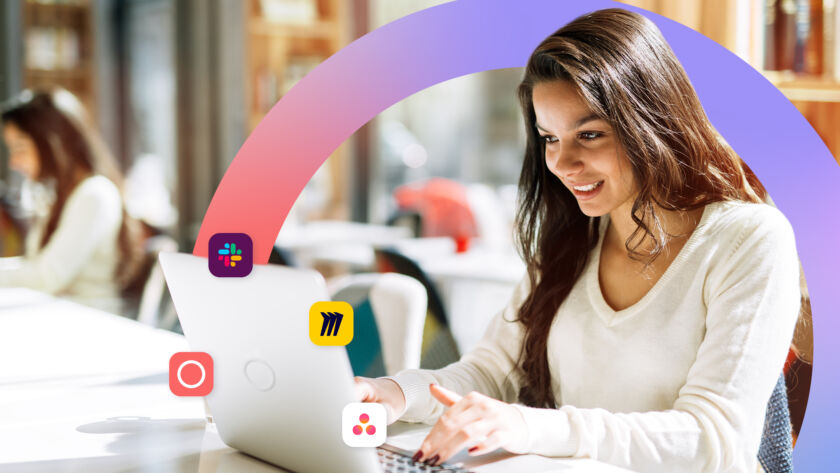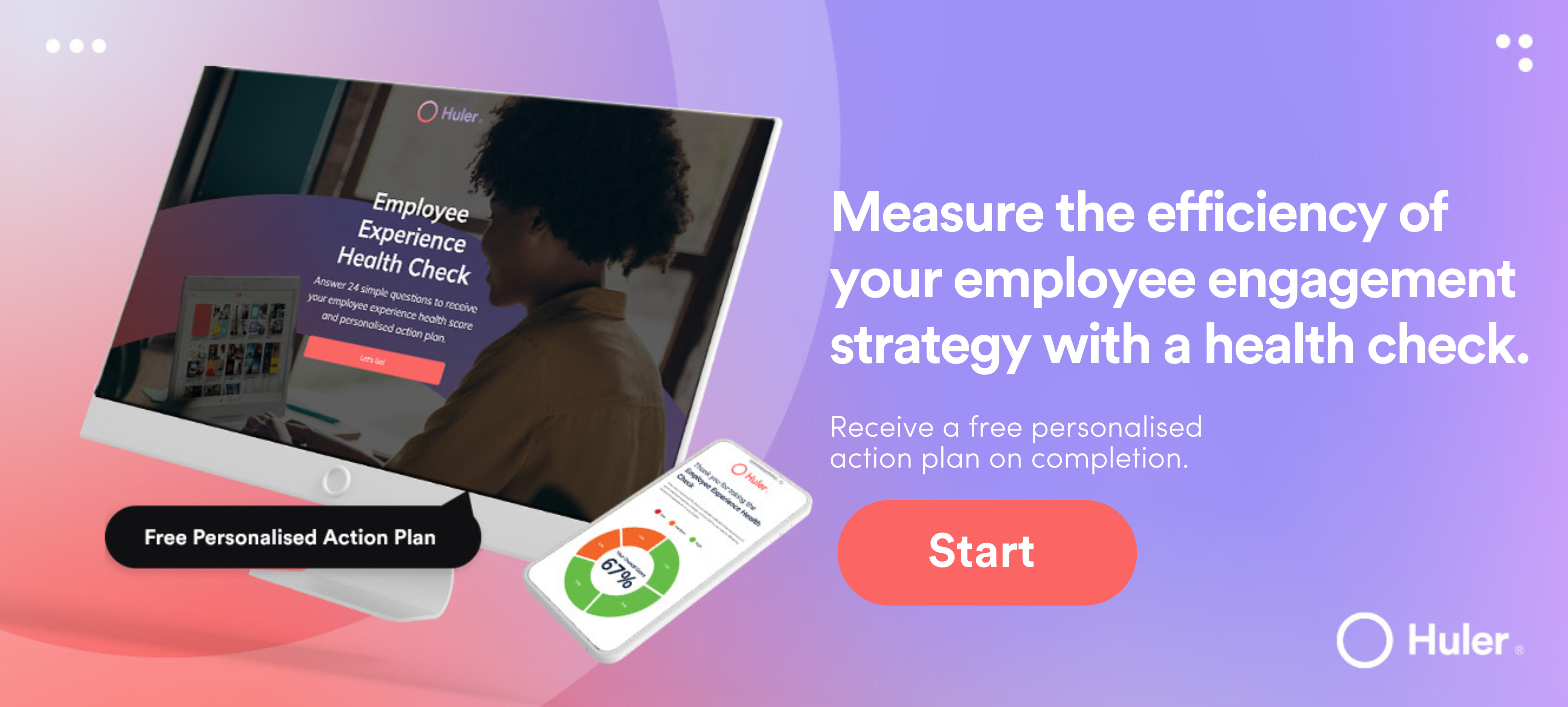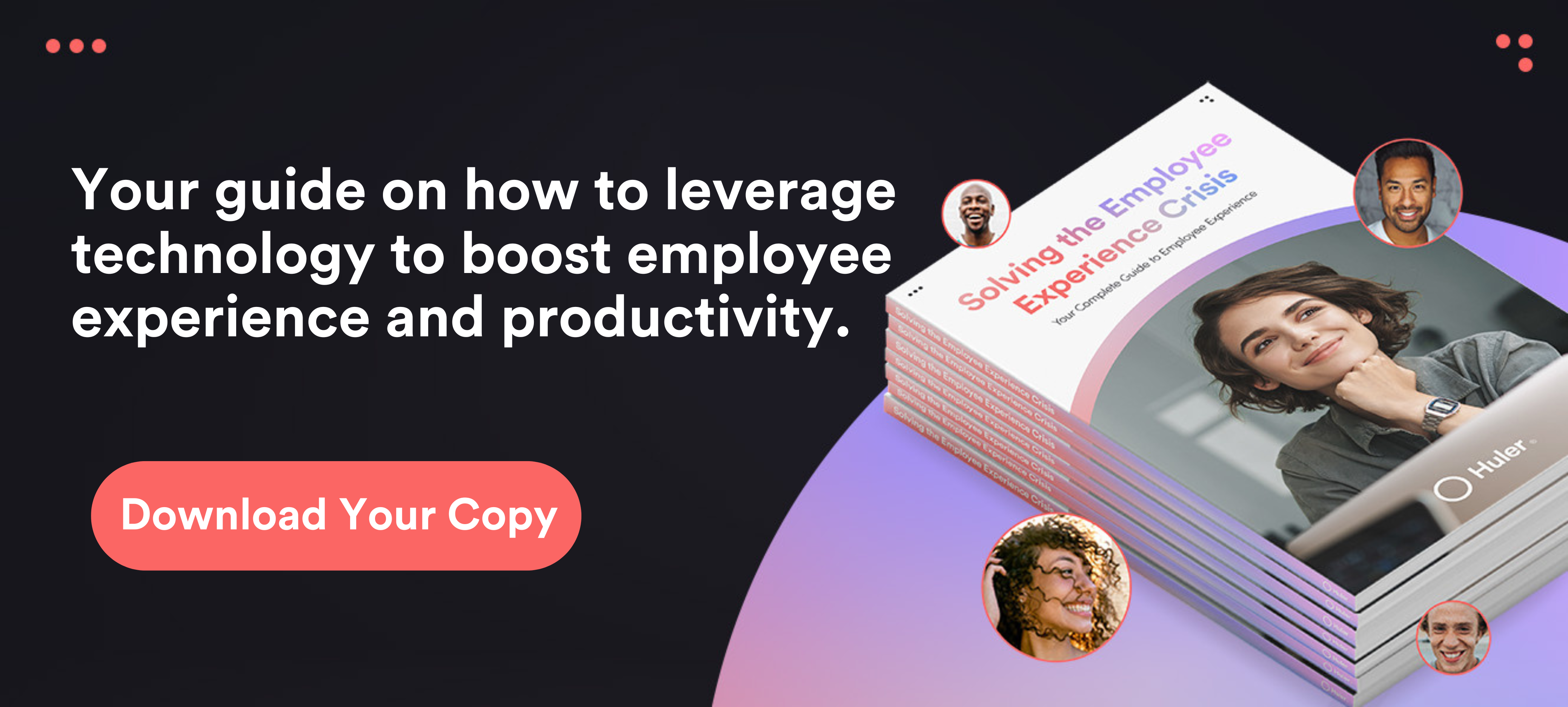







Businesses cannot exist without employees. That’s a fact. Unhappy employees are more likely to look for other job opportunities than engaged and happy employees. 69% of UK employees feel confident about moving to a new role in 2022, with 24% planning to change their jobs in the next few months.¹
The Great Resignation changed the way employers value their staff. The experience of going through a pandemic, along with the switch to remote or hybrid work, has changed how employees think about their work-life balance. This has convinced many to reconsider what is actually important to them when it comes to a job.
Today, employers who want to attract and retain top talents have to offer more than a good salary. They also have to provide a superior employee experience to cultivate an engaged workforce.
We built HulerHub to bring consumer-level digital experiences to internal workplace workflows and communication. We believe workers and customers deserve the same types of experiences, and that complex and confusing legacy business systems are a major contributing factor to poor employee experience.
A better future is possible, but it’s first critical to make sure that you know what exactly it is you are looking to achieve.
Suggested reading: For more details on how to enhance the employee experience further, check out our new eBook — Solving the Employee Experience Crisis.
What is employee experience (EX)?
Employee experience (EX) is a term that encapsulates everything the worker sees, does, learns, and feels during all the touchpoints in the employee life cycle. This starts at job application and continues through the onboarding process, training, and day to day activities, ending with a person's departure from the company.
There are a lot of factors that influence the employee experience your business offers, including:
- Tools, resources, and training available: A good technology stack makes it easier for staff members to complete tasks, communicate and collaborate. Providing a thorough run-through of your tools and procedures offers your employees a clear idea of what’s expected of them, how to use the resources at their disposal, and how to accomplish their duties.
- Your physical working environment: The physical work environment directly impacts your staff's well-being and performance. Many factors, including their working space, communal areas, desk space, the comfort of chairs, and even the office's temperature, can create a motivational ambience that boosts your team's creativity and productivity. This also includes integrating at-home and in-office environments, which highlights the importance of thinking about your digital workplace as shaping how that physical environment is experienced.
- Recognition of work: Employees want to feel appreciated for their hard work. And when you create a recognition-rich work culture, your staff members are less likely to quit. The voluntary turnover rates of companies that recognise employees for their exceptional results are 31% lower.² Particularly in the context of hybrid working, having open channels across your business or teams to share success stories is a great idea.
- Opportunity to develop: Your team members strive to become better professionals and advance their careers. 75% of workers cite a lack of career progression as the number one reason to quit a job.³ By providing opportunities for progression internally, this can improve morale, motivation and productivity within an employee’s role. This can help you understand what employees desire in their careers and you can help provide development opportunities that meet them where they are.
- A sense of purpose and belonging: A culture of acceptance, inclusion and identity makes your employees feel like they’re members of a special group. And when your team members feel like their work has meaning, they gain a sense of fulfilment and perform better.
- An environment where they feel heard: Feedback is the cornerstone of a good employee experience. Gathering and analysing employee feedback enables you to understand your staff’s expectations, goals and values. This helps you make informed decisions on how to provide a satisfying employee experience.
Want to know the secret to improving employee experience?
Book a free demo of HulerHub to find out.
What employee experience isn’t
Now that we’ve established what employee experience is, let’s debunk a few misconceptions and myths.
- Only HR’s responsibility: Employee experience is not solely your HR department’s responsibility. Everyone has to play their part, from the CEO to the part-time design intern. While your HR specialists are responsible for the employee experience they create during the recruitment and onboarding process, your staff’s day to day experiences are influenced by everyone they come in contact with.
- A part of the employee’s life-cycle: While employee experience influences how your team members perceive all the stages of the employee life cycle, it’s not part of it. Instead, the life cycle and journey steps define an employee experience.
- The same as employee engagement: Employee experience is not the same as employee engagement. Think of employee experience as the sum of experiences your employees have on their journey with your company. Employee engagement is your employee's commitment to your organisation throughout this journey.
How is employee engagement different?
Employee engagement is the connection your staff has to the work they perform. Highly engaged employees care about doing a good job, so they perform better and often go out of their way to help the organisation grow.
While providing a good employee experience helps create a work culture that encourages engagement, it only comes about when people get satisfaction from their jobs. And good work relationships — with colleagues, management, tech department, etc. — are some of the main drivers of long-term job satisfaction.
How is EX and employee engagement related?
You can look at your workplace and your employees like a sports team. Suppose your players (employees) are unhappy with the club's state, the training facilities, equipment, or the coaching quality. In that case, they will be less motivated and engaged to go out and play their best in matches. This will then negatively impact their experience with the club. As a result, the individual, coach, and club — your business — will suffer.
However, suppose your club has excellent facilities, top-notch equipment, and coaching staff. In that case, there is no reason why the players won't be engaged and perform at their best when game time comes. This will therefore increase the chance of a positive result.
Similarly, all the components you put into your workplace create a unique employee experience. Employee engagement is your employees' feeling when all those different components come together.
The purpose of providing a superior employee experience is to encourage an engaged workforce. Because having an engaged workforce offers multiple benefits for both you and your employees, such as
- Improved customer loyalty: Engaged employees feel connected to the business, so they want to do their very best on every occasion. This leads to an improvement in customer success and loyalty.⁴
- Greater employee satisfaction: Engaged employees like their jobs, so they experience a feeling of satisfaction when they perform them well.
- Fewer injuries and lower absenteeism: Happy employees are healthy employees. Highly engaged workforces report 70% fewer safety incidents, reducing absenteeism.⁵
- Improved productivity: Engaged employees who feel supported by a strong company culture are more productive.
- Higher retention: 33% of unengaged employees quit their jobs looking for new challenges.⁶ Engaged employees feel satisfied with their work, so they don’t have to look for other opportunities.
The good news is that you can optimise the employee experience you offer to encourage engagement across the different stages of your team’s journey in your company.
The Employee Experience Journey
To understand how different aspects influence your staff’s employee experience and engagement, we should first look at the employee experience journey.
The employee experience journey measures how your company handles each stage of the employee life cycle. Most experience journeys follow a similar pattern:
- Attract: Treating the candidates fairly and outlining expectations during the interview process improves their experience.
- Hire: It is easy for candidates to complete the necessary documentation to streamline the hiring process. The software that is used during a hiring process can help you create a database for all your documents and have everything you need in an accessible location.
- Onboard: It's essential to make the new hire feel like they're part of a group and provide the resources they need to start working. Communication tools can help you share messages with your team members.
- Train: Helping your employees develop skills and learn the ropes of their new job enhances their experience. You can centralise your learning resources, making them easier to access.
- Engage: Managers and colleagues should initiate work relationships to strengthen the new hire’s bonds with them and your business.
- Perform: Employees should receive feedback on their work and feel supported.
- Develop: Team members should feel like they can access new positions and grow as professionals.
- Depart: The employees who exit the business should do so positively, knowing that they were valued members of the team.
Employees often go through the Train, Engage, Perform, and Develop stages multiple times to gain promotions. You should make sure that you provide a positive employee experience and keep your staff engaged during all the steps in their journey. Here's how you do it.
Improve employee experience and employee engagement
Our employee experience platform can enhance and improve many areas of employee experience and employee engagement. Even though every business is different and has specific needs, there are several strategies that help companies all over the globe keep their workforce engaged:
- Encouraging feedback and acting upon it: Employees want to be heard, and acting on their feedback improves their work experience. You can gather feedback with surveys and track your team’s activity to see how the changes you implement impact their work.
- Provide practical and relevant training and opportunities: Training makes your employees more successful at their jobs, which increases their satisfaction and engagement. Storing all your training resources in a single database makes sharing them with your team more accessible. Which reduces the time it takes your employees to find suitable training materials. Through HulerHub, you can create personalised dashboards and collate materials that can be shared internally and externally, allowing for a more streamlined onboarding process for new employees.
- Define your business culture and ensure it is shared: When your employees align their personal values to those of your company, they feel like they’re part of a group, increasing their engagement. Employee experience platforms help you share materials that reflect your company values via documents, internal newsletters, and team communication channels.
- Empower people by creating trust: Micromanagement is old news. You should encourage your staff members to take ownership of their work to increase their motivation.
- Recognise good work and be generous with praise: 92% of workers admit that they will perform the tasks they've been praised for in the future, so be generous with your compliments to increase your team's productivity.⁷
- Create a community within your team (from anywhere): A community enables your employees to feel like they belong. You can create a community for remote workers with celebrations, virtual break rooms, weekly happy hours, friendly competitions, and more.
- Ensure that your tech is accessible, user-friendly, and inviting: The right tech simplifies your team’s work, helping them save time and boost their productivity. Employee Experience Platforms like HulerHub enable you to create custom dashboards or curated views. This makes it easy for your employees to access relevant content, applications and facilitate communication on any device from anywhere in the world.
Suggested reading: Discover the power of employee experience platforms by reading our blog: 'What is an Employee Experience Platform?'
Provide the best employee experience you can with technology
Investing in employee engagement tools and providing your team with the right technology is the first step in ensuring happiness. HulerHub is a platform that enables you to take your company’s employee experience to the next level.
By creating a single point of access to all your organisation’s applications, content, learning resources, communication tools, and more, HulerHub helps optimise how your business works and interacts with each other.
But don’t take our word for it; book a free demo and see how HulerHub helps you provide a superior employee experience for yourself.









